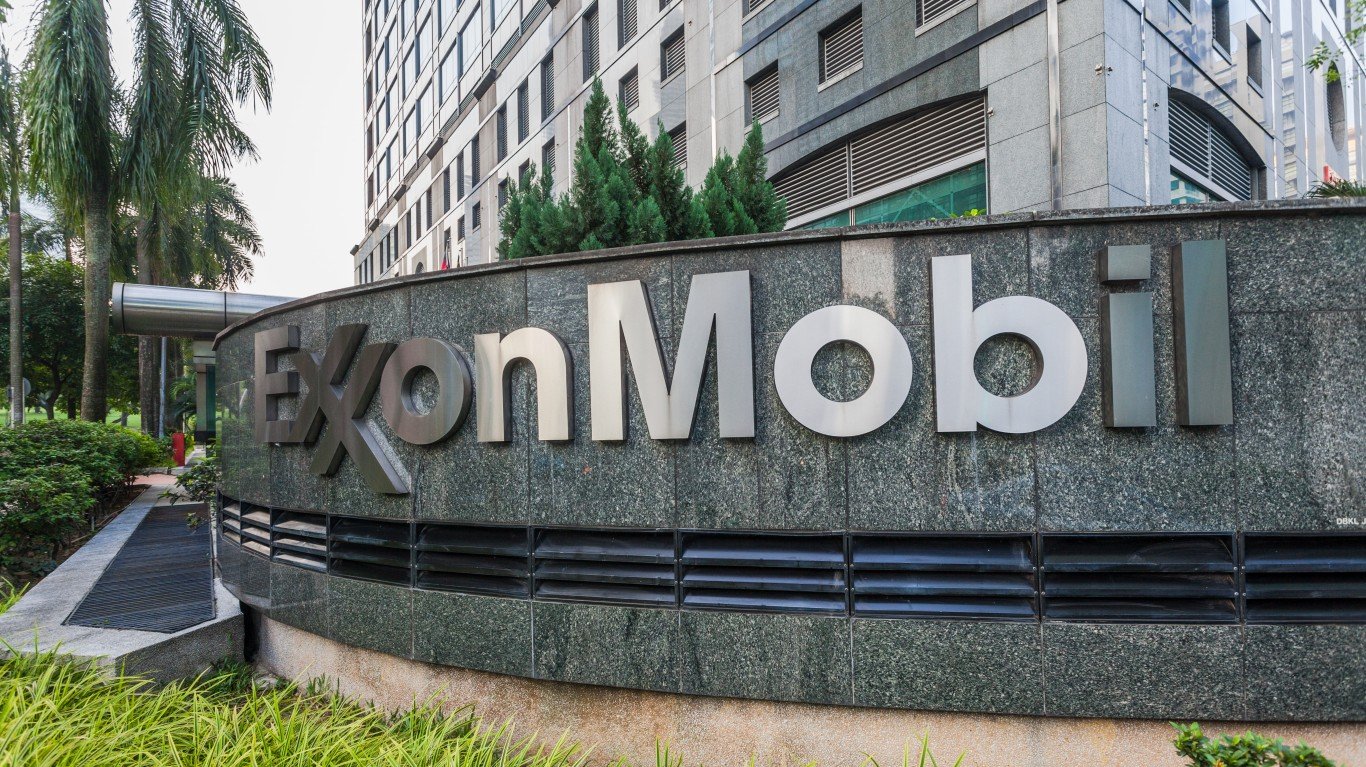

Oil and gas supermajor Exxon Mobil Corp. (NYSE: XOM) said Wednesday morning that it plans to raise its capital spending target over the next two years to a range of $63 billion to $65 billion, an increase of 24% over the company’s forecast at the beginning of last year. The investment will be heaviest in the company’s upstream division, where $46 billion to $48 billion in new spending is forecast.
The company delivered the news at its annual investor day presentation at the New York Stock Exchange. Based on 2017 adjusted earnings, Exxon said it expects its annual earnings potential to rise by 140% by 2025, assuming a crude oil price of $60 a barrel and margins equal to those of the 2017 fiscal year. Last year the company forecast earnings growth of 135% above the 2017 baseline.
Cash flow from operations is forecast at $60 billion for 2025, based on the same assumptions. That’s $24 billion higher than Exxon estimated at last year’s investor day and includes some $15 billion assets sales over the next three years.
CEO Darren Woods commented:
Given the success we experienced last year and the progress we’re making on our plans, we have even greater confidence in our ability to grow value for our shareholders. We are exceeding the pace of our expected progress on the aggressive growth strategy we laid out last year. We continue to enhance our industry-leading portfolio, and are leveraging our competitive advantages in integration, scale, technology and execution to deliver long-term value for our shareholders.
Investors may not agree. An average of $32 billion in capital spending for each of the next two years promises higher returns but over a longer time frame than many investors would like. And everything has to go perfectly for that 140% return to be realized. A $60 price for crude is not a sure thing by any stretch.
Chevron Corp. (NYSE: CVX) executives met with analysts on Tuesday and said the company plans to spend about $19 billion to $22 billion annually in the next three years on capital and exploration expenditures. Chevron CEO Michael Wirth emphasized the company capital discipline in his comments, something that Exxon has chosen to counter with a full-speed-ahead approach that it believes promises a bigger payoff for the company and those investors willing to be patient. Analysts at Barclays liked Chevron’s story well enough to reiterate their Overweight rating on the stock and raise the price target from $140 to $150.
Exxon had a good year in 2018, replacing more than 300% of its production with new proved reserves of 4.5 billion oil-equivalent barrels. Most of that total — some 3.6 billion barrels — was down to rising prices primarily for the company’s Kearl oil sands project in Canada. Added acreage in the Permian basin added about 1.2 billion barrels of proved reserves and discoveries offshore of Guyana and acquired acreage offshore of Brazil added 1.3 billion barrels to the company’s resource base (not proved reserves). The company eliminated 800 million barrels from its proved reserves due to an agreement to curtail production offshore of the Netherlands.
Comparing the company’s year-over-year production outlooks emphasizes the growth outlook. Last year Exxon forecast Guyana production would reach 500,000 barrels a day in 2025; that forecast rose to 750,000 barrels this year. Brazilian acreage, forecast at 1.4 million net acres last year, rose to 2.3 million net acres, and Permian Basin production, previously forecast at 600,000 barrels a day by 2025, has been increased to more than a million barrels a day.
Exxon stock traded down about 2.7% at $78.03 just after the opening bell Wednesday morning. The stock’s 52-week range is $64.65 to $87.35, and the 12-month consensus price target is $84.27. Exxon’s dividend yield at last night’s closing price was 4.08%.
Chevron traded up about 0.2% at $123.56 a share, in a 52-week range of $100.22 to $131.08. The price target on the stock is $137.45, and the dividend yield is 3.9%.
Sponsored: Find a Qualified Financial Advisor
Finding a qualified financial advisor doesn’t have to be hard. SmartAsset’s free tool matches you with up to 3 fiduciary financial advisors in your area in 5 minutes. Each advisor has been vetted by SmartAsset and is held to a fiduciary standard to act in your best interests. If you’re ready to be matched with local advisors that can help you achieve your financial goals, get started now.
Thank you for reading! Have some feedback for us?
Contact the 24/7 Wall St. editorial team.


